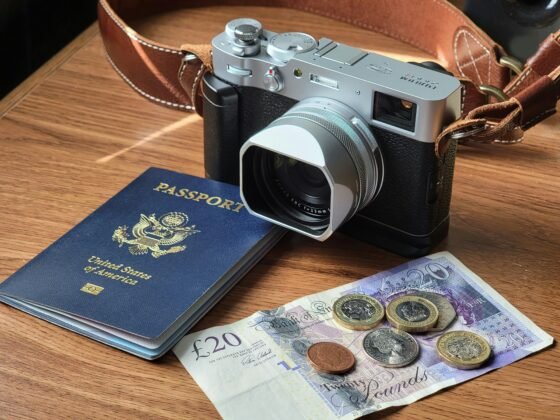
We have all missed travel during the Covid pandemic in 2020 and 2021. Many people have turned to spending their money on nesting and improving their homes and gardens in the meantime. Those with a true passion for travel have incorporated their favourite destinations into their homes and gardens.
The Mediterranean style is an easy one to add to both your home and garden and it will at least give you a taste of those beautiful places whilst we wait for travel to open up again. Mediterranean decor will give your home the sunny atmosphere inherent in the coastal regions of Italy, France, Morocco, Greece – just some of the 22 countries of with access to the Mediterranean Sea.
Warm sand, moist sea breeze, lush vegetation – everything in the Mediterranean style of interior design is permeated with natural notes that create extraordinary relaxation and comfort in the house. The good thing about the Mediterranean seascape is that very the sight of it instantly cheers you up. And how can you not be happy?! Warm interior reminiscent of summer, sunny decor, lightness and carefree days on holiday… Would you like for your home to look like this? Then keep on reading this article to find out how to recreate such an atmosphere even in homes miles from the sea.
Even though the Mediterranean style does not refer to any particular country, it is still possible to single out regions. This is sunny Italy, this is bright and hot Spain, or blue and white Greece. Sea, waves, greenery, warmth – this style is very tactile, isn’t it? Looking at these Mediterranean photographs, you can practically feel the light breeze and the warmth of the sun on your face.
Materials
The Mediterranean style implies a combination of finishing materials and a combination of various textures. Terracotta tiles are best suited for the floor – this will be the most common and recognizable option. You can also lay marble or travertine on the floor. As a more budget option, you can use a laminate with stone imitation. But it is better to refrain from wood with a natural texture on the floor. Remember: it is usually hot in the Mediterranean, and stone floors serve as a natural way to cool the room.
Walls can be covered with paint or plaster. It is also possible to use tiles on the walls – not only in the bathroom and kitchen apron but also in living rooms (for example, in the form of ornaments and patterns). In addition, natural stone framing of the fireplace and elements of wall niches is relevant. But the ceilings are best kept white, as the tradition requires. Decorative beams will be an excellent entourage.
Speaking about the general characteristics of the room, it is also worth mentioning that the Mediterranean interior is characterized by large windows and arched openings that can be occupied, for example, with vases or even pots.
Furniture
As a rule, the Mediterranean style implies squat massive furniture – both wooden and forged will do (or you can combine it). Wicker and rattan furniture are also popular. Glass inserts will look good in the decoration of furniture. In the kitchen or in the dining room, if there is a separate room for it, it is important to have a large dining table – in most cases, a wooden one will do. And to buy a perfect dining table, you can visit nfoutlet.com. It is also important that all furniture is sufficiently comfortable and soft (in the case of sofas and armchairs): this style assumes an atmosphere of relaxation, so hard stools are not welcome here. Speaking of colors, it is worth remembering the region itself: here it is terracotta, and brown, and numerous shades of blue and blue. A wooden fan will look good under the ceiling.
Rooms
A floor made of modest-sized tiles will be perfect in the kitchen. However, it can be worn, textured and (or) imitating antiquity. At the same time, facades can be either restrained or bright colors – from wine to turquoise. The bedroom offers an extremely calm and peaceful atmosphere. The natural wood of a massive wardrobe, white sheets, flying curtains, plain walls – all this fits perfectly into the Mediterranean style. There is not much furniture – only the most necessary and simple in form: a comfortable bed, a wardrobe, a bedside table. However, if you want to complicate the interior a little, you can choose a bed with curved legs and a carved headboard.
Textiles
Fully fitted carpets are not found in the Mediterranean regions as it is too hot but you will find plenty of small rugs. They can be either cotton or natural fibres. Curtains should be as simple as possible: ruffles and unnecessary decor will be superfluous. In this case, you can use both Roman blinds and standard curtains. By the way, instead of curtains, you can use wooden blinds. Light, flying, snow-white – only such curtains will organically complement a room decorated in a Mediterranean style. No prints, bright colors or dense textures – only the finest natural fabrics in a single color range. The only textile accessories available in an accent color palette are decorative pillows and woven floor rugs.
The same principle is used when choosing pillows and bedspreads: as simple as possible, extremely natural. Linen and cotton are the champion’s choice. A fragment of a fishing net will look interesting, for example, it can divide the zones of a room. You can weave a couple of seashells into the net.
Lighting
As mentioned above, the Mediterranean style implies large windows. In fact, this is an important aspect of lighting: the larger the windows, the more light and air in the room. Natural daylight plays a very important role in the interior design of this style. But even if we can not always change the dimensions of the windows, the choice of lamps is exclusively ours. In a chandelier store, you should give preference to both the chandeliers themselves (forged options are very popular in the Mediterranean), and spotlights that help organize local lighting. You can also buy classic sconces and table lamps and use bulbs at a warm light temperature.
Color schemes
The azure of the sky and the blue of the sea, the greenery of a muted emerald hue and the whitish-golden sand are the shades that the Mediterranean style has absorbed from its natural surroundings. Snow-white or milky color is used in the decoration of the main surfaces of the room: walls and ceiling. Turquoise, ultramarine, aquamarine are traditionally accents. Brown tones – from light beige to chocolate, – are present in the colors of cabinet furniture and accessories.
It is unlikely that it will be possible to recreate the Mediterranean style in the interior of the apartment by decorating the walls with natural stone, but a similar effect can be achieved with the help of light-textured plaster, white background painting, and custom wallpaper imitating a cut of stone or rough whitewash.
Additional accents will be made by characteristic frescoes and paintings that create the illusion of a breakthrough in space: seascapes, sketches of ornate seaside streets and architectural elements.https:/
Ceiling decorations
The ceiling in the interiors of coastal villas in Italy, Greece, Spain and other Mediterranean countries was invariably whitewashed – against its background, the dark wooden beams (the supporting element of the house ceiling) looked expressive and impressive. In a modern apartment, such a structural element will look a little cumbersome, but it will fit quite harmoniously into the interior of the house in the Mediterranean style. Especially if dark wood is also present in the design of furniture and accessories.
Mediterranean style in the interior is similar to a light breath of the sea breeze. Decorating an interior in a Mediterranean style is not so difficult if you choose the appropriate accessories, textiles and furniture.












